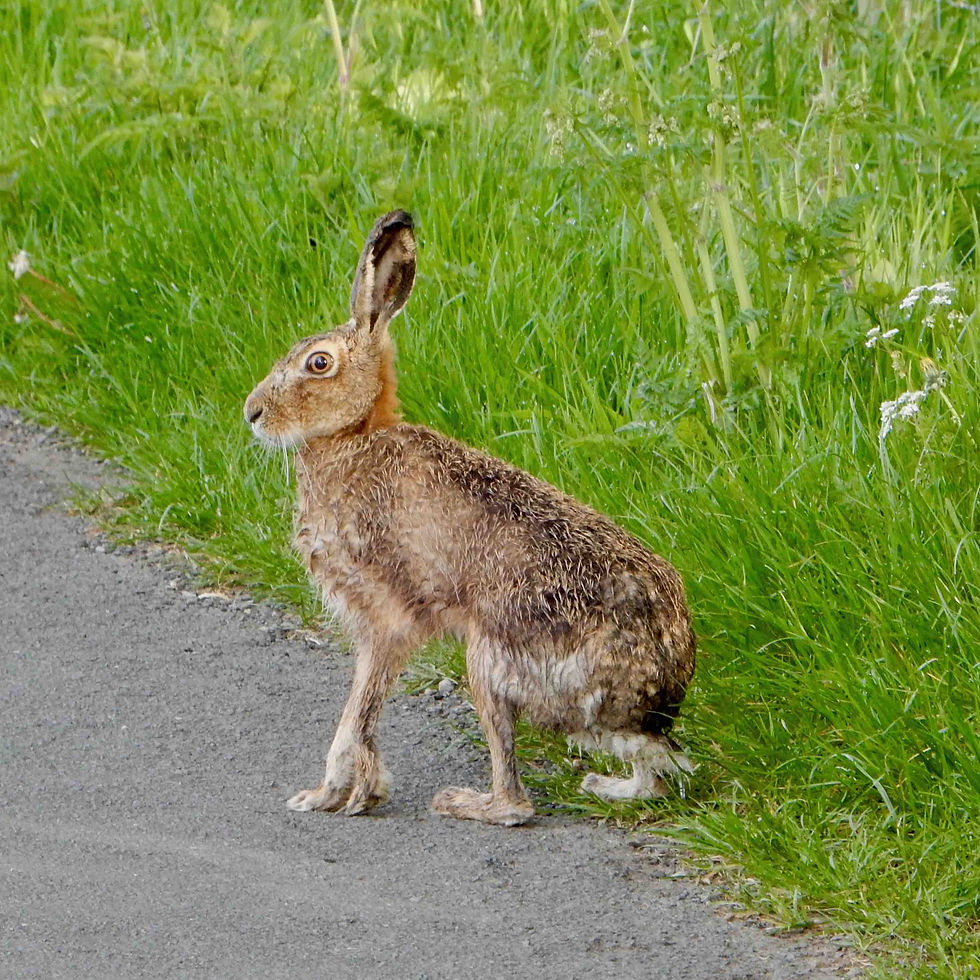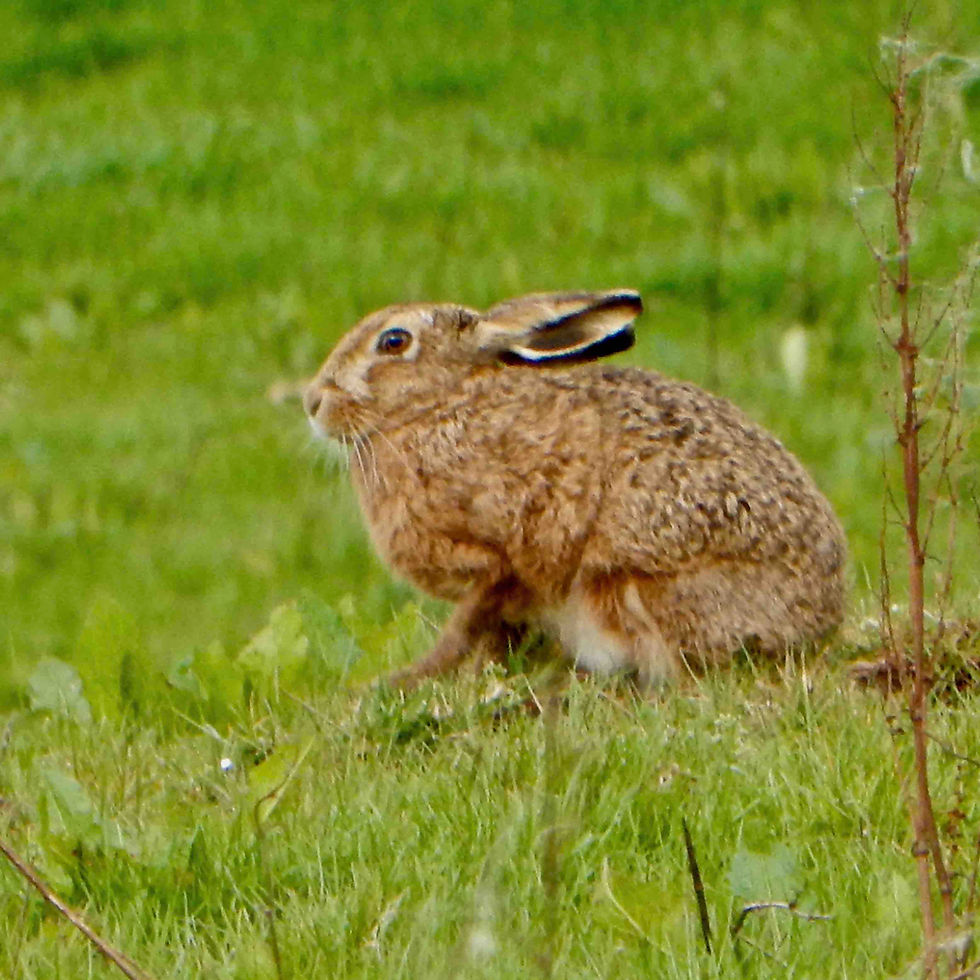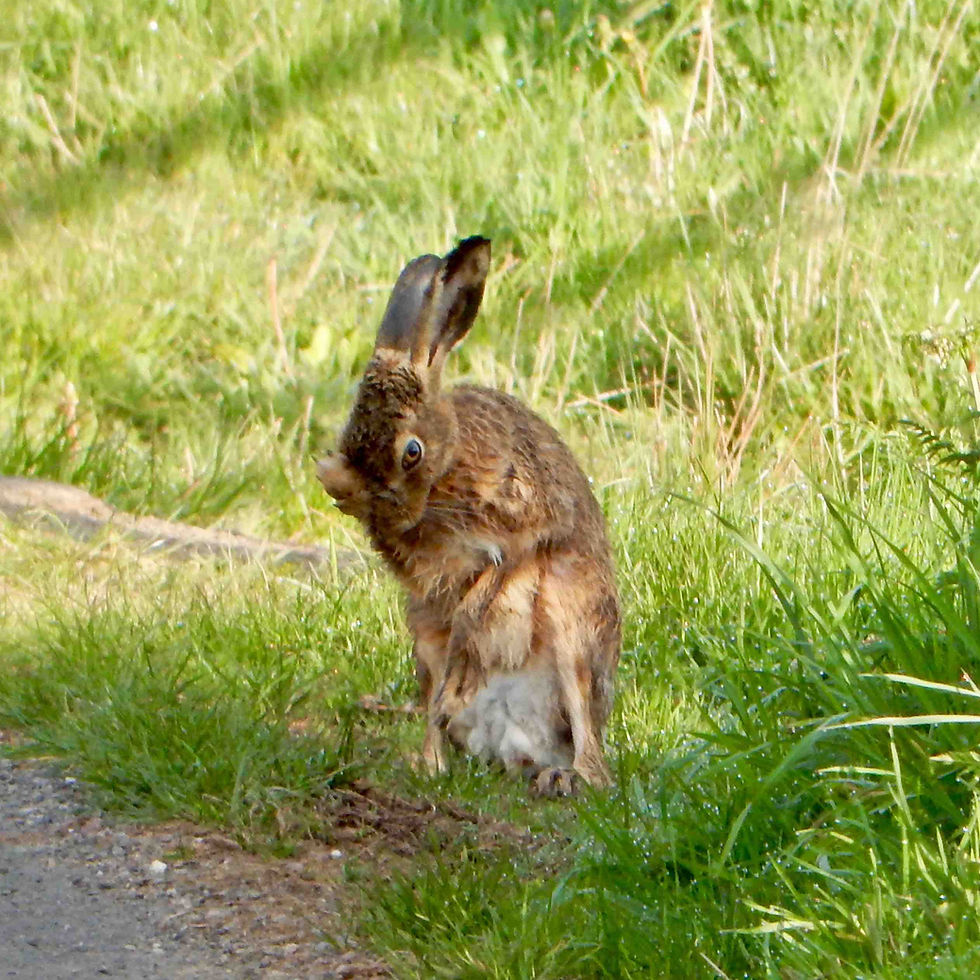
The brown hare is thought to have been introduced by the Romans and is common on grassland in the Lake District. I see them in fields and on grass verges when I am out and about early in the morning but they are difficult to photograph because they can move at up to 45mph! Hares are the fastest mammal in the UK. There were once thought to be 4 million hares in UK, but latest estimates are around 700 000. Numbers have been affected by modern farming practices such as the removal of hedgerows, habitat destruction and illegal hare coursing. In the last century, farms have gone from being mixed to being much more specialised, no longer providing year round grazing for hares. Foxes, pesticides and modern farm machinery kill many hares. 97% of traditional hay meadows have been lost since the 1940s, being replaced by the much earlier cutting of silage. Silage may be cut more than once, also increasing leveret mortality.

Hares can have 3-4 litters of young per year of between 2 and 4 leverets. Unlike rabbits, leverets are born with fur and their eyes open. Like other prey animals such as deer, they can run within minutes of being born. They do not live in burrows but rely on camouflage to keep them safe. The mother leaves them alone and hidden for most of the day in long grass or depressions in the ground so as not to draw attention to them. Hares are much larger than rabbits weighing in at 3-4kg, with longer hind legs and distinctive black tips to their ears.

I am a member of the Hare Preservation Trust (http://hare-preservation-trust.com). As with my work with the Rare Breeds Survival Trust, my hare pictures are intended to raise awareness of the need to preserve hare habitat and increase awareness of their vulnerability. They are the only game species in England and Wales not protected by a closed season. Shoots as early as February may leave many leverets to starve to death. Hares are regarded as a pest on cereal crops, so culling can be extensive (the mountain hare is protected).



I use alpaca fibre to create my hare portraits. This tends to be a solid colour but hares are brindled so I use dog brushes to combine 3-4 different colours of alpaca! See https://www.ullswaterfeltart.com/hares

Comments